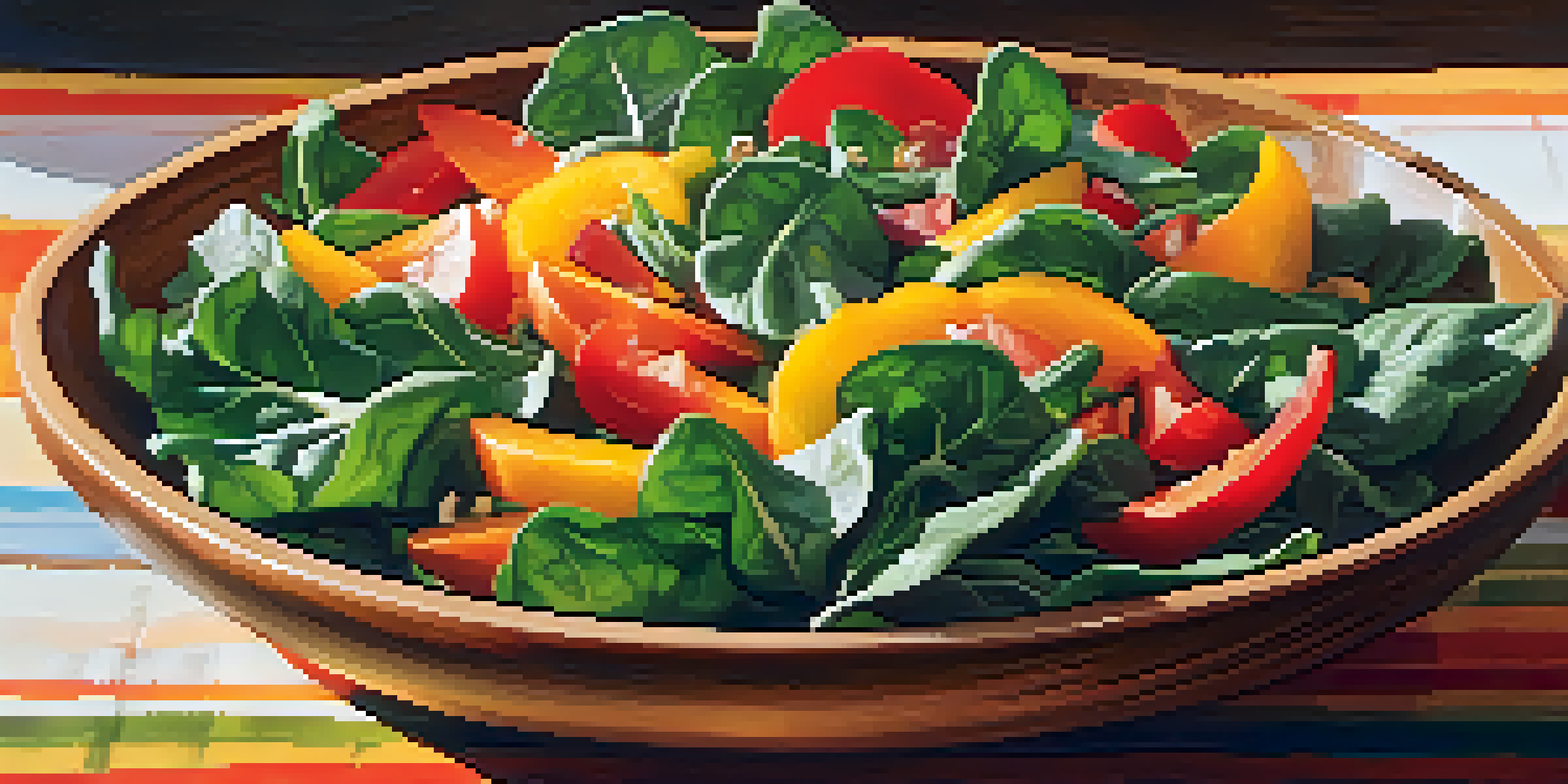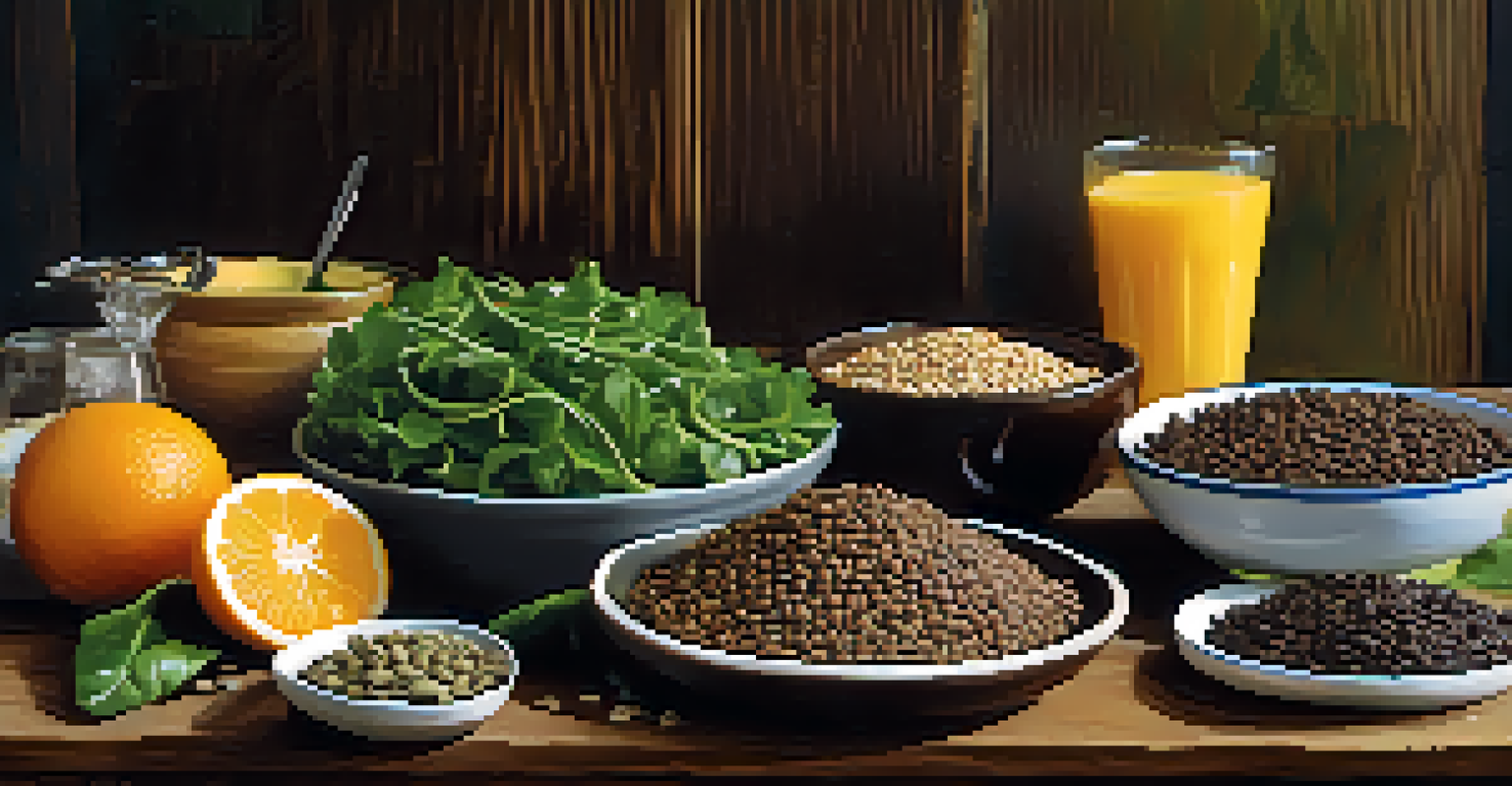Iron Intake and Absorption in Raw Food Diets

The Importance of Iron in Our Diet
Iron is a crucial mineral that plays a vital role in transporting oxygen throughout our bodies. It's essential for making hemoglobin, the protein in red blood cells that carries oxygen to our tissues. Without adequate iron, our energy levels can drop, leading to fatigue and weakness.
A healthy outside starts from the inside.
For those on a raw food diet, understanding the importance of iron becomes even more critical. Plant-based sources of iron, like leafy greens and legumes, are abundant in such diets. However, the form of iron found in plants, known as non-heme iron, is not absorbed as efficiently as the heme iron found in animal products.
Related Resource
Therefore, it's essential for raw food enthusiasts to be mindful of their iron intake. Balancing their meals with iron-rich foods while being aware of factors that enhance or inhibit absorption can help maintain healthy iron levels.
Raw Food Diets and Iron Sources
Raw food diets primarily consist of fruits, vegetables, nuts, and seeds, which can provide a variety of nutrients, including iron. Leafy greens like spinach and kale, along with legumes like lentils and chickpeas, are excellent plant-based sources of iron. Nuts, especially cashews and almonds, also contribute to iron intake.

However, the challenge lies in the absorption of this iron. While these foods are rich in iron, the presence of certain compounds like phytates and oxalates in plants can inhibit its absorption. For example, spinach contains oxalates that bind to iron, making it less available to the body.
Iron is essential for energy levels
Adequate iron is vital for producing hemoglobin, which transports oxygen in the body and prevents fatigue.
To maximize iron intake from these sources, raw food enthusiasts can combine iron-rich foods with those high in vitamin C, such as citrus fruits or bell peppers. This combination can enhance the absorption of non-heme iron significantly.
Factors Affecting Iron Absorption
Iron absorption can be influenced by various dietary factors. For instance, consuming foods high in calcium, such as dairy or fortified plant milks, can interfere with iron uptake. This is crucial for those on a raw food diet, as they may rely on alternative sources like almond milk.
Let food be thy medicine and medicine be thy food.
Additionally, certain beverages, like coffee and tea, contain tannins that can inhibit iron absorption when consumed with meals. It's wise to time these drinks away from iron-rich meals to ensure optimal absorption of this essential mineral.
Related Resource
Moreover, the overall balance of the diet plays a significant role. A varied diet that includes different food groups can help mitigate the impact of these inhibitors, ensuring that individuals get the iron they need for their health.
Symptoms of Iron Deficiency
Iron deficiency can lead to a host of symptoms that may affect one's quality of life. Common signs include fatigue, weakness, and pale skin, which can often be mistaken for simple tiredness. This makes it crucial for those on raw food diets to be aware of their iron status.
In more severe cases, individuals might experience shortness of breath, dizziness, or brittle nails. These symptoms can be alarming and are often a signal that the body is not getting enough iron to function properly. Regular check-ups and blood tests can help monitor iron levels.
Raw diets require careful planning
Individuals on raw food diets need to focus on iron-rich plant sources and strategies to enhance iron absorption.
If someone suspects they are experiencing symptoms of iron deficiency, it's essential to consult a healthcare professional. They can provide guidance on dietary changes or supplements if necessary, ensuring that iron intake meets individual needs.
The Role of Supplements in Raw Food Diets
While a raw food diet can provide many nutrients, some individuals may find it challenging to meet their iron needs through food alone. In such cases, iron supplements can be a helpful addition. However, it's important to choose the right type of supplement and dosage to avoid any adverse effects.
There are various forms of iron supplements available, including ferrous sulfate and ferrous gluconate, each with different absorption rates. Consulting with a healthcare provider can help determine the most suitable option based on individual dietary habits and health conditions.
Related Resource
It's also worth noting that excessive iron intake can lead to toxicity, so moderation is key. A balanced approach that includes dietary sources along with supplementation when necessary is ideal for maintaining optimal iron levels.
Practical Tips for Increasing Iron Intake
For those following a raw food diet, there are several practical strategies to enhance iron intake. Incorporating a variety of iron-rich foods, such as sprouted lentils, sunflower seeds, and dark chocolate, can provide a tasty way to boost iron levels. These foods not only offer iron but also bring diverse flavors and textures to meals.
Pairing these foods with vitamin C-rich ingredients is another effective strategy. For instance, adding orange slices or diced bell peppers to a spinach salad can significantly enhance iron absorption. It's all about creating delicious combinations that are both nutritious and enjoyable.
Monitor symptoms of iron deficiency
Being aware of symptoms like fatigue and weakness is crucial for those on raw food diets to ensure they are meeting their iron needs.
Lastly, consider soaking or sprouting grains and legumes, as this can reduce the phytate content and improve iron bioavailability. These simple methods can make a big difference in how well iron is absorbed from raw food sources.
Conclusion: Balancing Iron in a Raw Food Lifestyle
In conclusion, maintaining adequate iron levels while following a raw food diet requires a thoughtful approach. By being aware of the sources of iron, understanding the factors that affect absorption, and incorporating strategies to enhance intake, individuals can enjoy the benefits of a raw food lifestyle without compromising their health.
Regularly monitoring iron status through dietary choices and, if necessary, supplements can help prevent deficiency. It's all about balance and making informed decisions that support overall well-being.

Ultimately, a raw food diet can be both nutritious and satisfying when iron intake is managed effectively. Embracing a diverse array of foods and being mindful of nutrient interactions can lead to a healthy, vibrant life.